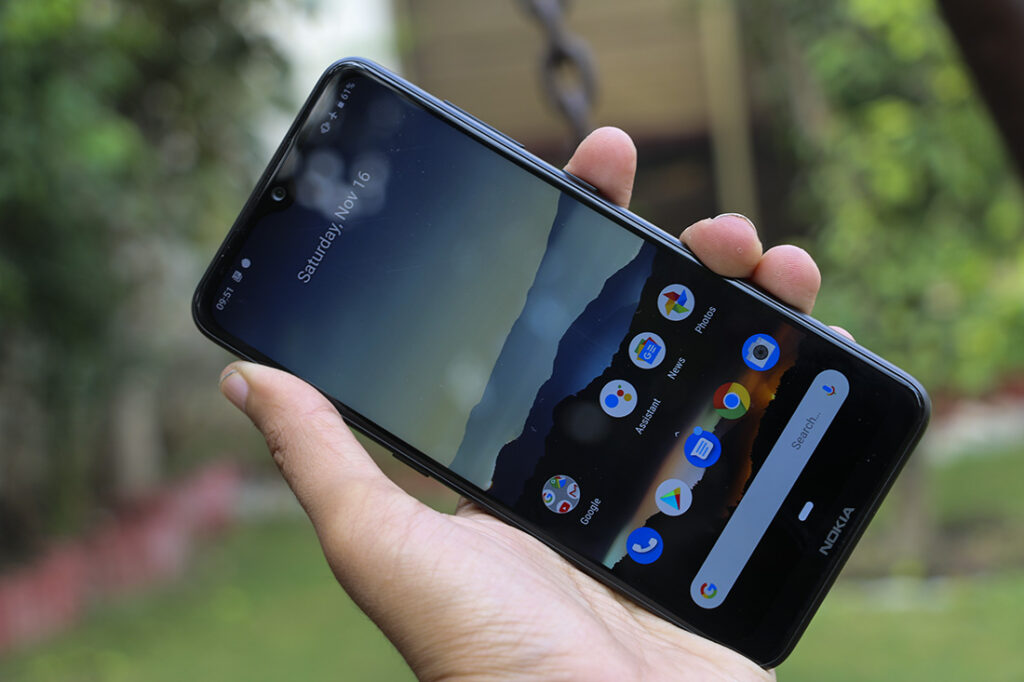Nokia 7.2 is the latest iteration and a successor to Nokia 7.1. It recently came with a younger sibling, Nokia 6.2, both of them have been designed to enrich the photography experience. If you have experienced a Nokia device lately, you would know their rising love for the camera prowess that goes hand in hand with ZEISS’s photography skill.
To find out how good Nokia 7.2 performed in our tests, let’s jump to the review.
Nokia 7.2 Specifications
- Display: 6.3 inches IPS LCD, 1080 x 2280 pixels resolution, PureDisplay
- OS: Android 9.0, Android One
- CPU: Qualcomm Snapdragon 660, Octa-core
- RAM/ROM: 6GB/128GB
- Camera (rear): 48MP + 8MP + 5MP
- Camera (front): 20MP
- Battery: 3500 mAh
Design and Display
The maker of Nokia 7.2 has done a great job in the design department; it looks like a decent balance between aesthetics and usability. The phone comes in three colors, Cyan Green, Charcoal, and Ice. We have the second one as our review unit.
It gives a matte finish rear panel that is protected by Gorilla Glass 3, although it does look plasticky due to being a dull-looking rear; however, the fact is true for the chassis, which is a polycarbonate composite. It is a perfect body that ceases to capture smudges and fingerprints and gives you the freedom to hold it without protecting it with a silicon back case.

The rear triple camera setup is enclosed in a circle that catches the attention on the first look. Although the RIM sticks out to a great extent, the phone does not wobble on a flat surface. Underneath the cameras, the fingerprint scanner can be located at a perfect height giving easy access to the index finger.
A Nokia logo decently finds its natural place underneath the scanner, but the same is quite un-naturally placed on the front side in the chin area. HMD is halfway through its second year since it introduced Android phones, I still don’t understand why they overdo the Nokia branding every time.
Apart from this, the front is all clean dominated by Gorilla Glass 3 protected 6.3 inch IPS LCD that provides 1080 x 2280 pixels of resolution. A waterdrop notch is positioned at the top edge encircling the front lens and sitting right below the earpiece. It does not negatively impact the viewing experience, but Nokia hasn’t provided an option to hide it either, which I think should be left at the user’s discretion.

Like I said earlier, it is a carefully designed device; the well protruded keys are a testament to the fact. The power key, which also functions as the notification light, is placed on the right side underneath the volume rocker. It’s a soft light that does not annoy even in the dark. On the left side, Nokia has put a dedicated key for calling Google assistant that wakes up the virtual assistant from the dead screen.

The audio jack and secondary microphone have a place on the top area, whereas the bottom holds space for the USB Type-C slot, speaker grille, and the primary microphone.

Overall it’s a sturdy body that gives an excellent grip to the hand.
Back to the display, Nokia 7.2 sports Pure Display technology that further improves the quality by scaling the SDR content into HDR, although it already offers HDR 10 support. The result is an immersive viewing experience, especially the movie content. We did enjoy the content on the Nokia screen for being crips and well balanced both indoor and outdoor.
Performance and Battery
Nokia 7.2 is loaded with Octacore Qualcomm Snapdragon 660 that is based on 14nm technology coupled with 6GB RAM and 128GB internal storage. The phone scored 165,600 on Antutu while it reached 335 on Geekbench’s single-core, but on the multicore, it scored 1,320.
It is a chipset from the past, almost two years ago. The decision must have been taken to put a lesser load on the battery, but the results are not favorable for battery life, however.

Talking about the speed and handling of multitasking, the phone works perfectly fine under normal circumstances. It can take care of almost every mid-level application. Switching between apps is smooth until you turn on graphics-rich apps, especially the games when things start getting rough, and the lags are more prominent.
Gaming is where it starts to lag intermittently and freeze the screen sometimes while playing PUGB and Call of Duty for longer sessions and switching between them. Unlike PUBG, Call of Duty takes a lot of time at the time of loading. Stutters and frame drops are visible. On the other hand, games like Subway Surf are no problem for this phone.
In a nutshell, for mid-level users, who are not aggressively into multitasking and gaming, the phone shouldn’t disappoint with its low-performing chipset.
Nokia 7.2 does not come with a massive battery. 3500 mAh can not be considered a good life unless optimized heavily. Although Nokia claims a two days backup, it proved otherwise during our tests. With light to moderate use, the battery could last for a day, but it never survived a whole day with prolonged sessions of social media, gaming, and photography.
- Our 30 minutes PUBG session consumed 12% of the battery while Call of Duty, on the other hand, drained 13% life out of battery during the same period. On average, aggressive multitasking can eat up to 22% of the battery in an hour.
- In our 4.5 hours app test, it lost nearly 78% of its juice. The following graph can shed further light on the battery performance. We ran each app for 30 minutes, which is our standard procedure for testing the real might of the battery. We usually insert both the 4G SIMs inside to reflect the real-life usage pattern throughout our testing period.
- Back to back movie play drained the battery from 100% to zero in almost 8 hours; however, the 10w charger that comes out of the box refilled it in nearly 2 hours.
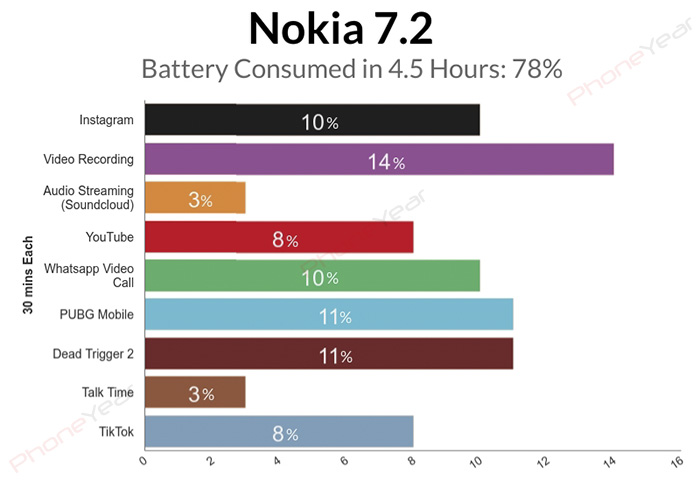
User Interface
Nokia 7.2 comes with Android 9.0, which is not the latest Android iteration, but the HMD is committed to providing the software update for the next 2 years because it is an Android One phone. That means the phone is going to get the latest versions of Google OS, and Android 10 doesn’t seem that far. Besides, it also ensures three years of security updates.
Being an Android One, the phone is free from customized skins, cluttered setting areas, bloatware, and duplicate apps. The phone only offers what Google has put inside. There is no additional video, music, or calendar app on top of Google’s flavor. There are no Facebook and Twitter out of the box either.
Having said that, you are free to download any Google’s default alternative from the Play Store.

The default interface is clean and pure, the way Google wishes it to be, and it contributes to the overall beauty of this phone that is based on the minimum hardware and software elements.
There is an Always-on Display feature that helps know what is landing in; besides, the Nokia 7.2 offers Google One support for 100 GB extra space across Google drive for Gmail, Google Photos, and files.
Camera

One of the prominent features of the Nokia 7.2 is its triple camera setup that is creatively placed on the rear panel in association with the ZEISS. The circle houses a 48 MP primary lens, an 8MP ultrawide, and a 5 MP depth sensor dedicated for bokeh. Its primary camera can shoot 4K and 1080p videos and support stabilization.
On the front, there is a 20MP sensor for selfies that can also shoot 1080p videos.
The trio works decently in good lighting conditions without overdoing the contrast and colors. But overall, the primary lens maintains a warmer tone. On the other hand, the wide-angle lens does the opposite and makes things cooler.
Similarly, details are good to capture with the main lens, however, the wide-angle lens produces more washed-out images.
The HDR mode helps highlight details under extreme and low light conditions; sometimes, it tends to sharpen the image aggressively and invite more noise than desired.
Low light and night pictures with auto mode are lesser in detail, but thanks to Nokia, there is a dedicated Night mode that can absorb more light, but in doing so, it spreads more warmth across the picture.
Nokia has given some magic options in the shape of the ZEISS effects, which looks quite complex to handle at first, but with the right practice, it can be handy for producing some good photos.
In portrait mode, you can tap the three small stars on the screen to activate 6 ZEISS tools for handling background objects and creating a bokeh effect. It can disassociate the subject from the background by blurring it in various ways depending upon your choice of the tool. Few of them can do the job very harshly to an extent where it starts to look unnatural treatment. It seems like the software part overprocesses for creating the bokeh effect that is not as smooth and real as it should look. We believe Nokia should consider refining its ZEISS tool by making it simpler in the next versions.
The smartphone can record 720, 1080, and 4K videos, but the stabilization is only available for 1080 resolution. Its Ozo sound capturing can record a slightest of ting with the help of its two microphones, which is impressive.
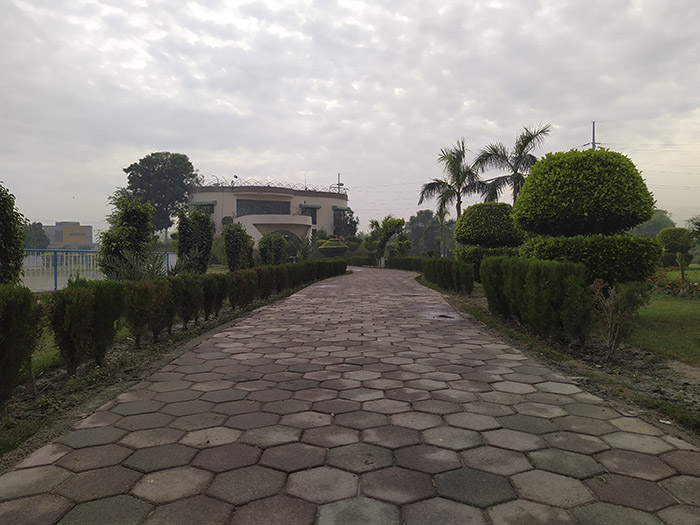


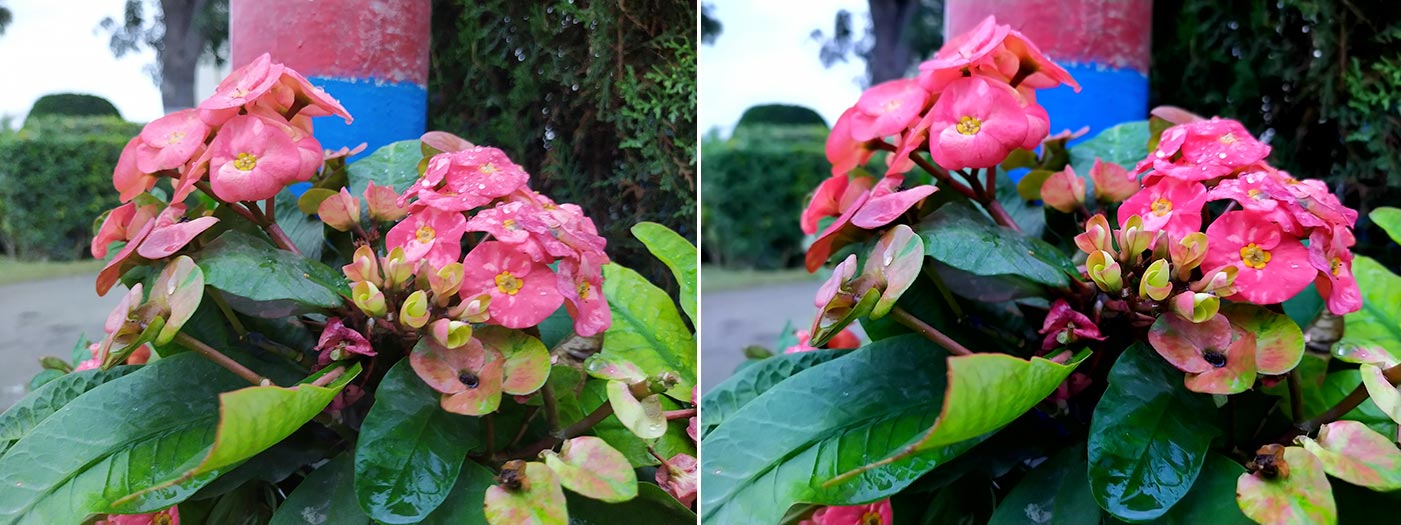


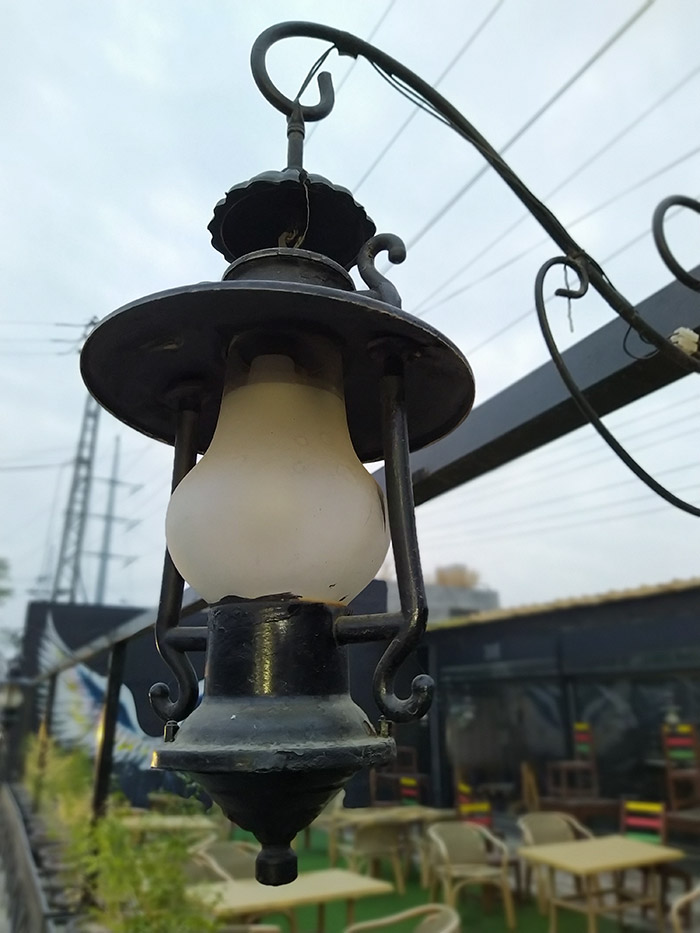








Verdict
Nokia 7.2 gives a solid look. It is a device comfortable to hold, but if you are an aggressive user, the modest chipset might not suit your requirements. Although the triple camera can provide some decent shots, an ordinary battery strength does not support continuous video recording.

